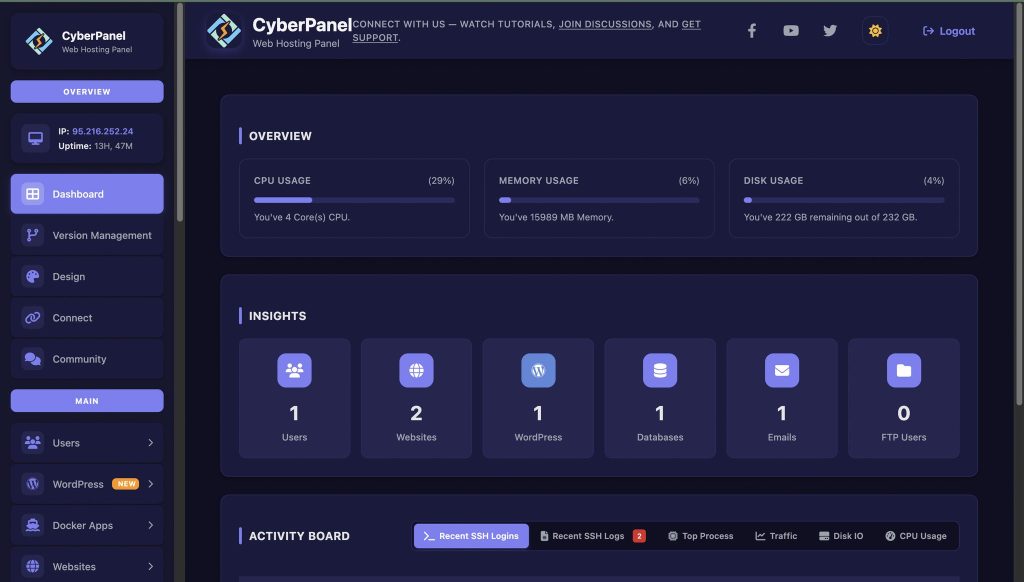An important aspect of Linux system administration is managing processes. There are times when you want to halt applications quickly that are behaving abnormally and do not want to find the process ID (PID). The Linux pkill command simplifies this function because you can kill processes by name rather than with a PID.
Unlike kill, which takes a numeric PID, the pkill Linux utility works with process names, patterns, or user-defined criteria. This is much quicker and more flexible especially if there are many running processes of the same type.
Whether your are learning how to use the pkill command in Linux or trying to weigh the difference between Linux kill vs pkill, this guide explains everything.
Let’s dive in!
What is the pkill Command in Linux?
The pkill command in Linux is used to terminate processes based on name, user, group, or other attributes. It eliminates the need to manually find process IDs.
How to Use pkill Command in Linux?
The Linux pkill command is simple to use. You specify the process name instead of its PID.
Get exclusive access to all things tech-savvy, and be the first to receive
the latest updates directly in your inbox.
Syntax:
pkill [OPTIONS] PATTERN Example: Kill Firefox
pkill firefox This command will terminate all processes named “firefox” running under your session.
Linux pkill examples with options
| Command | Description |
|---|---|
pkill sshd | Kill all SSH daemon processes |
pkill -u user1 | Kill all processes owned by user1 |
pkill -f "python script.py" | Kill process using full command line match |
pkill -9 nginx | Forcefully kill all Nginx processes |
pkill -x bash | Kill only processes with exact name “bash” |
Difference between Linux kill vs pkill
The main difference is how they identify processes:
| Feature | kill | pkill |
|---|---|---|
| Input | Requires PID | Uses process name or pattern |
| Flexibility | Limited | Very flexible |
| Ease of Use | Harder (find PID first) | Easier (direct by name) |
| Example | kill 1234 | pkill firefox |
Thus, Linux kill vs pkill comes down to convenience—pkill is faster when process names are known.
When Should You Employ pkill in Linux?
The Linux pkill command is beneficial when you want to terminate applications or services by name, without needing to comb through their corresponding PIDs. It is especially useful when there are multiple instances of the same type of process running, or when you are troubleshooting overloaded servers and it’s hanging applications.
Role of CyberPanel

CyberPanel is a free web hosting control panel powered by OpenLiteSpeed. Sometimes, on a Linux web server under CyberPanel management, processes such as web servers, databases, or applications may lock up or have spikes of overload. A Linux command to enable administrators to terminate faulty services by either simply typing in the name of the process is pkill. This command stops problematic services quickly, helping to maintain server stability and uptime without searching for and entering PIDs.
People Also Ask
What is the use of pkill in Linux?
It is used to terminate processes by name, user, or pattern without needing a PID.
How to use pkill to stop a specific application?

Run pkill appname, replacing appname with the process name.
What is the difference between kill and pkill?
kill requires a PID, while pkill works with process names or patterns.
Can pkill target processes by user?
Yes, with pkill -u username you can kill all processes of that user.
Is pkill safe to use in Linux?
Yes, but use carefully. A wrong pattern may close unintended processes.
Final Thoughts!
The Linux pkill command is an effective and convenient way to manage processes. The pkill command eliminates the need to keep track of processes’ PIDs manually and helps broaden targeting capabilities by name, pattern, or user. In comparison to kill, pkill Linux is a more flexible option for administrators.
Start using the pkill command in Linux today and take the stress out of managing processes.



